However, the story of its gestation is just as interesting as the outcome; for it was originally conceived as a race car, rather than the concours queen it has become.
The tale of the Stingray began with the Corvette SS, a project intended to replace the SR-2, GM’s factory racer. Two SS Corvettes were built – primarily to compete in the Le Mans 24 Hours – but soon afterwards fell victim to a voluntary ban on manufacturer-sponsored racing proposed by the Automobile Manufacturers Association. The pair of 1957 racers (one a ‘test mule’ for evaluating braking systems) was thereafter relegated to test track duties, and subsequently put into storage. But Bill Mitchell – then-Vice President for Design at GM – chose not to let the ban hamper his own love for motorsport, and in 1959 decided to stump up the princely sum of one dollar to bring the test mule SS out of a premature retirement.
So, Mitchell had a chassis for his race car – which usefully included a sophisticated De Dion rear suspension set-up – but being a designer, wanted his personally funded creation to flaunt some of his team’s aesthetic creativity. He had previously set up an in-house competition between GM’s different design studios to create a next-generation Corvette for 1960, which was won by GM’s youngest designer at the time, Peter Brock. The project was developed as the XP-86 (the ‘XP’ standing for ‘Experimental Pursuit’, a military term used during jet fighter development), but was eventually terminated due the combination of a recession and a change of chairman.
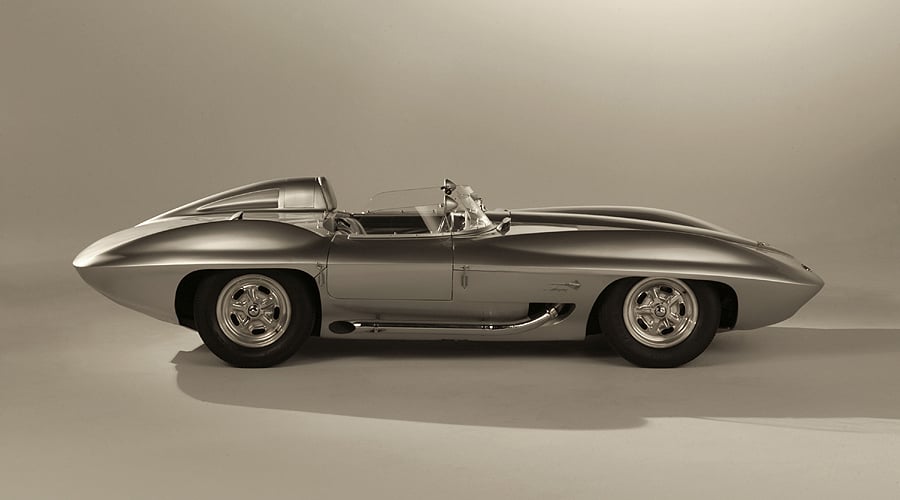
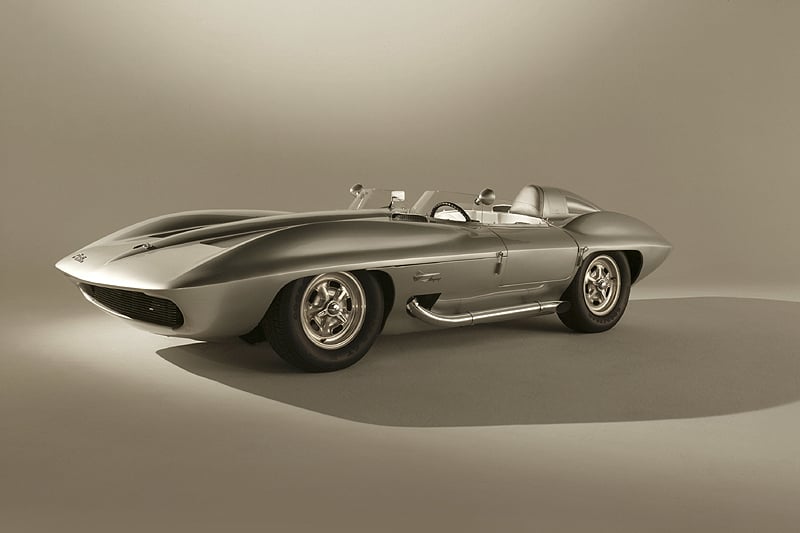
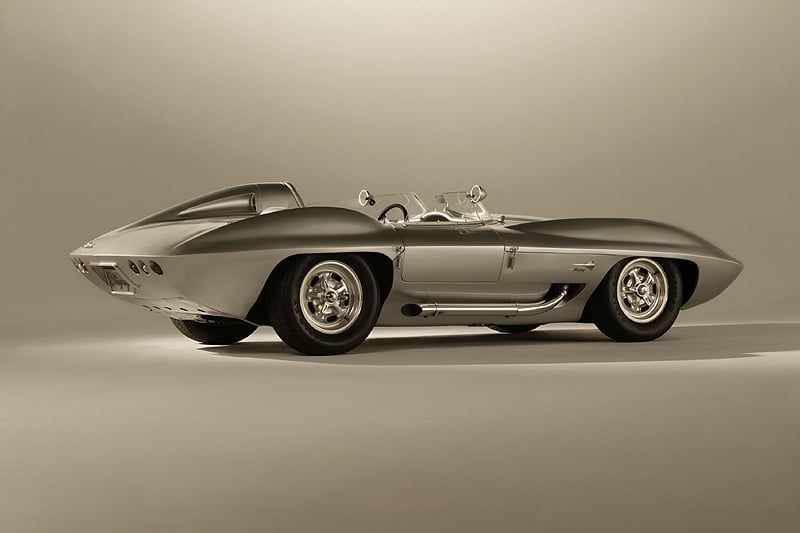
Mitchell married the SS chassis and the XP-86’s aesthetics with help from other members of the design team, which included a young Larry Shinoda (who went on to design the Boss 302 Mustang after migrating to Ford). The after-hours project – which was christened XP-87 – took place in the ‘Hammer Room’: a secret work area hidden behind a tool room. It was completed and ready to take to the track later in 1959, with a fuel-injected 4.6-litre V8 producing 311bhp nestled beneath the sculpted bonnet.
By then known as the Stingray Racer, it made its debut at the Maryland Marlboro Raceway at the hands of ‘Flying Dentist’ Dick Thompson, and narrowly missed out on a podium finish. An impressive feat, given that the 155mph Stingray reportedly had a tendency to ‘take off’ beyond 140mph, with its aerodynamics failing to provide enough downforce at the front end. Subsequent modifications were made, which proved successful enough for Thompson and his steed to bring home their class championship during the 1960 SCCA season. Mitchell chose to retire his Stingray on a high, with GM bosses showing interest in turning it into an official show car for the company.

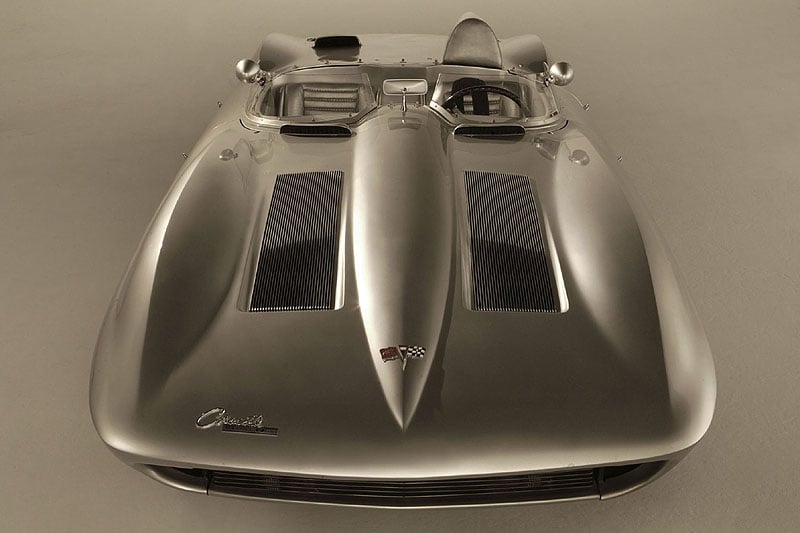
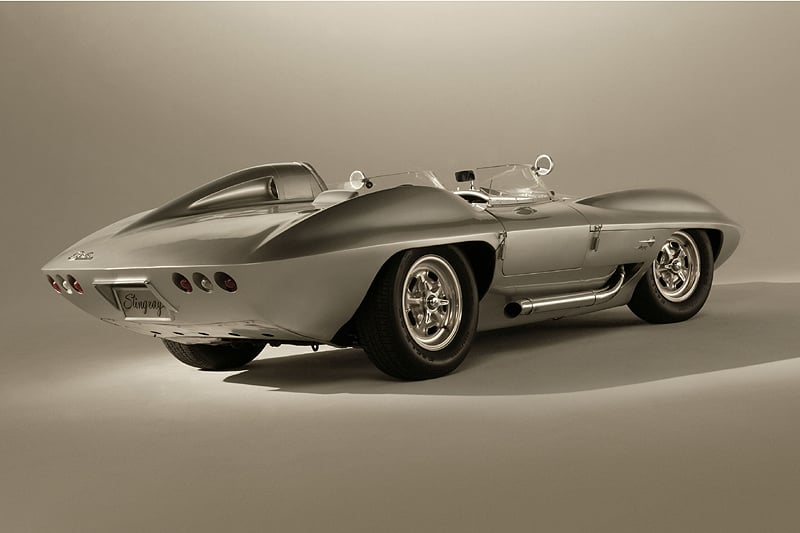
Of course, some alterations were necessary to complete the transformation, which chiefly included a new glassfibre body, a passenger seat, and the all-important Corvette badges. In its new role, XP-87 performed the task of drumming up interest for the second-generation Corvette, creating desire and aspiration in the same way that a production Sting Ray does today. After excelling in the assignment for a year, the car was then used as Mitchell’s personal road car – indeed he was often photographed behind the wheel wearing his trademark fedora. The Stingray concept’s road-going era saw it equipped with a 5.4-litre fuel-injected V8 developing 370bhp, as well as a set of disc brakes (the car had worn drum brakes throughout its racing stint in order to keep Mitchell-funded maintenance costs down).
Subsequently taken into the GM Heritage collection in which it remains today, the Stingray concept was not only an ancestor of one of the most iconic cars of American motoring history, but also enjoyed the rare opportunity of serving as a championship-winning race car and as a chariot for one of the pioneers of GM’s history. XP-87 is surely the automotive embodiment of the ‘work hard, play hard’ philosophy.
Photos: GM









